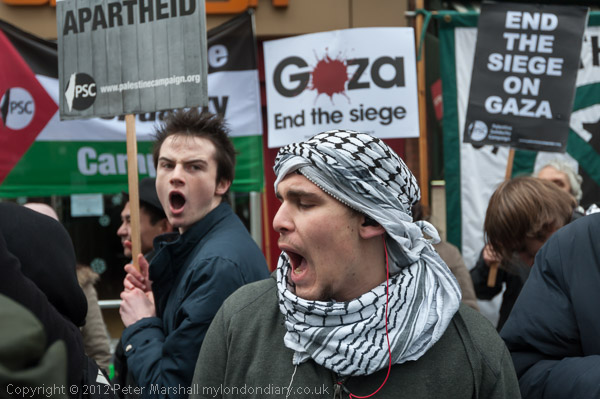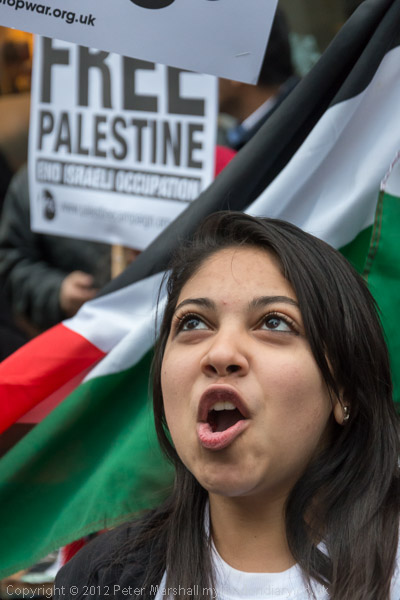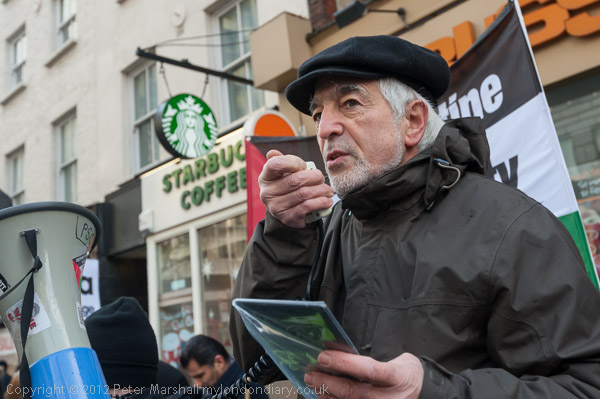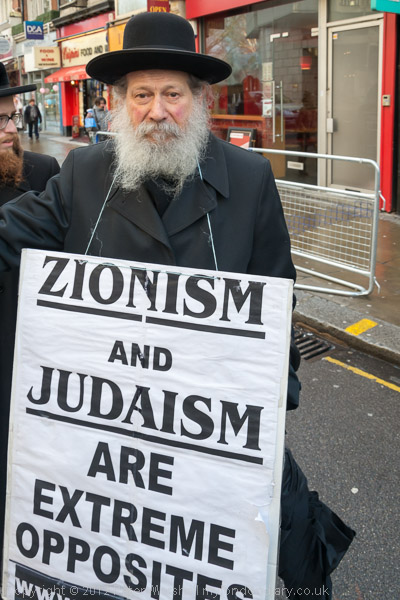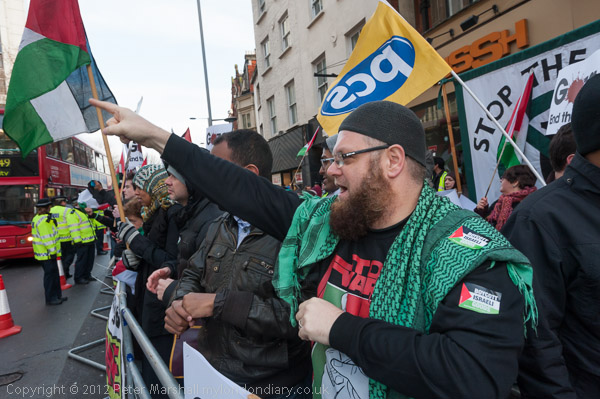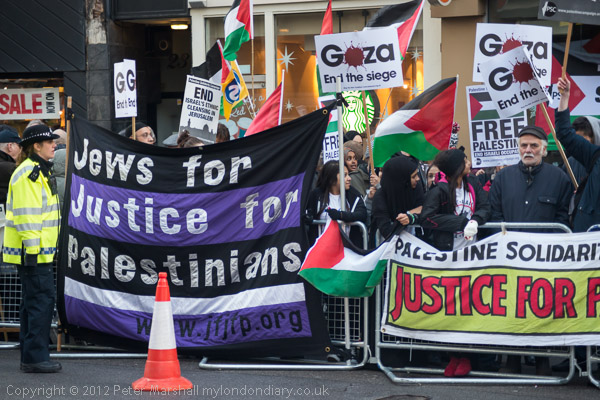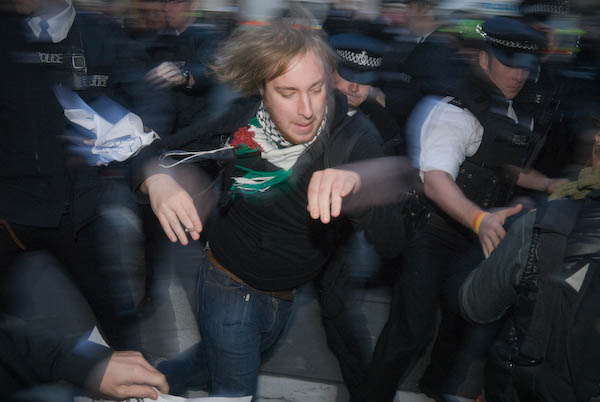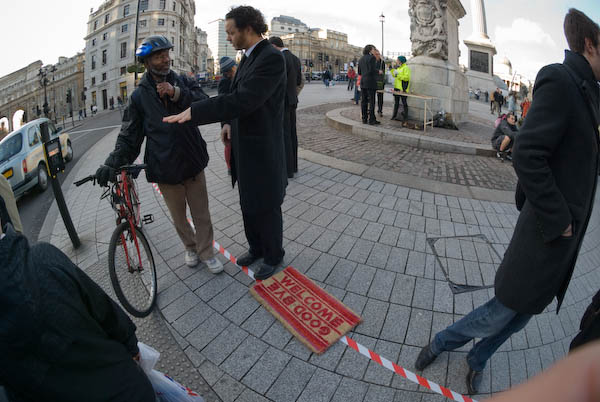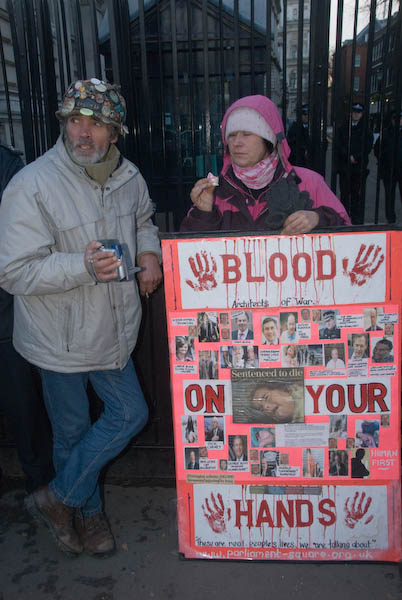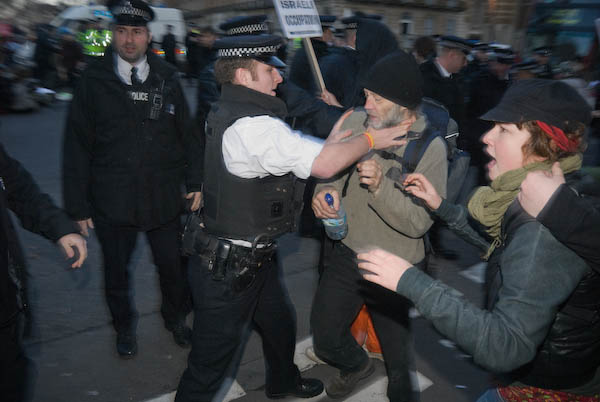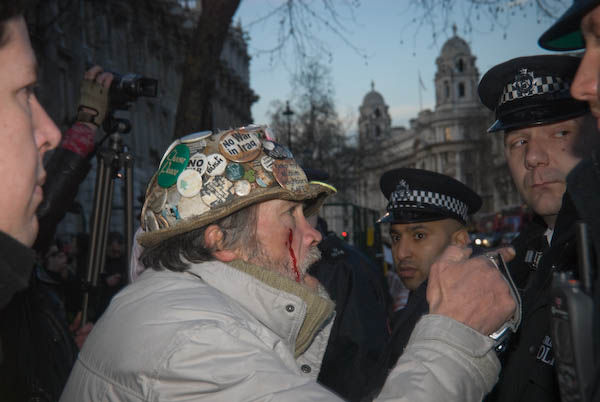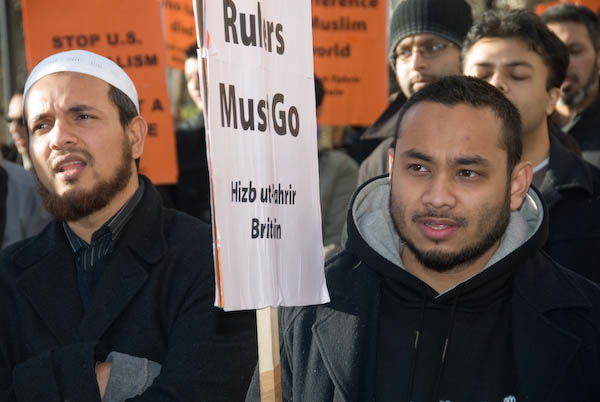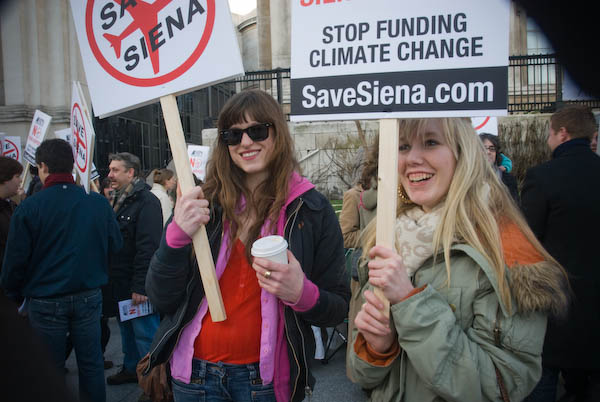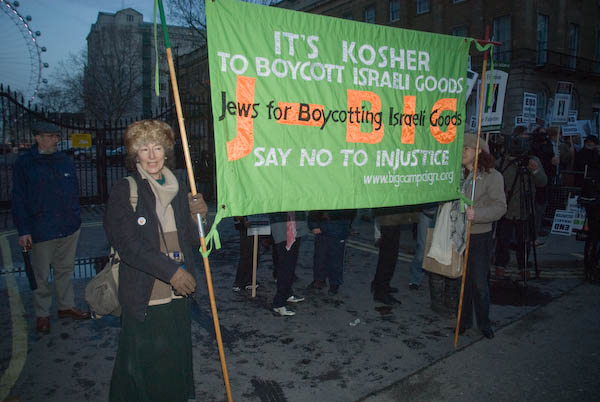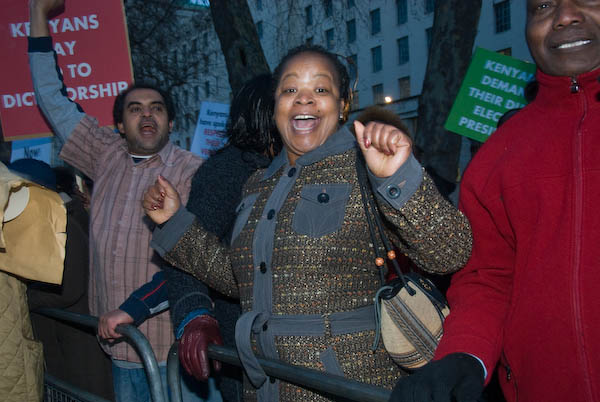Solidarity With Gaza, Save Lewisham Hospital – On Saturday morning, 24th November 2012 I joined marchers against the then recent Israeli attacks on Gaza and the continuing blockade which makes normal life there impossible. Although still a clearly disproportionate response, the death toll in 2012 was minuscule compared to the current ongoing destruction. In the afternoon I went to Lewisham for a march against proposals to close A&E and maternity services, and possibly also the the children’s wards, critical care unit and emergency surgery by the Trust Special Administrator Matthew Kershaw.
Solidarity With Gaza, End the Seige Now – Downing St
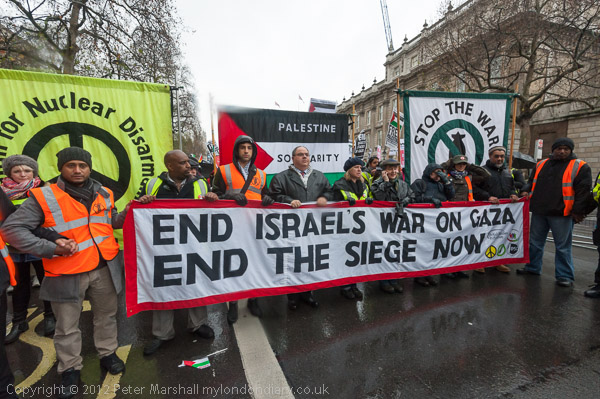
Despite persistent rain, several thousands turned up to protest at Downing Street before marching towards the Israeli Embassy following the start ten days earlier of ‘Operation Pillar of Defense‘ by the the Israel Defense Forces (IDF).
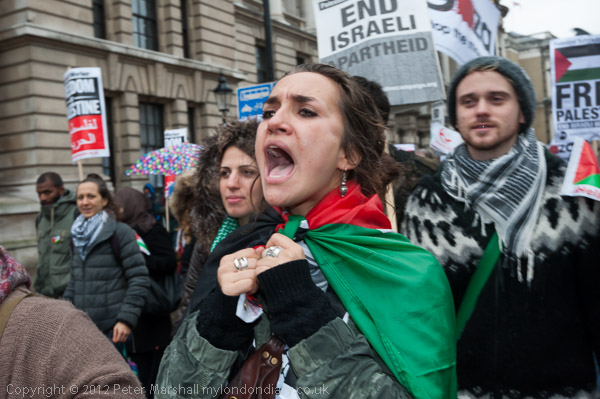
In the eight days before a ceasefire, Wikipedia states “the IDF claimed to have struck more than 1,500 sites in the Gaza Strip, including rocket launchpads, weapon depots, government facilities, and apartment blocks” with the UNHCR reporting “174 were killed and hundreds were wounded. Many families were displaced.”
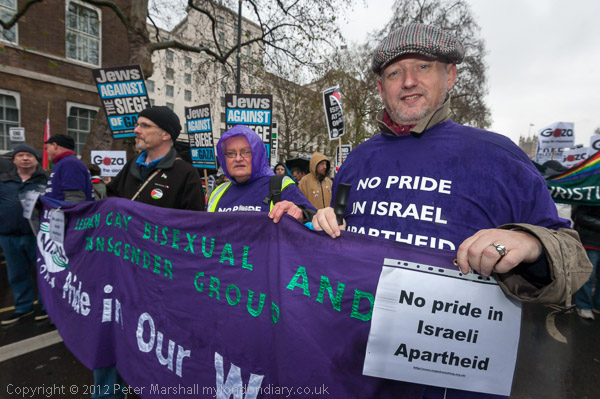
There were also deaths and casualties among Israelis, but on a much smaller scale, with 6 Israelis being killed and 240 injured by rockets fired from Gaza.
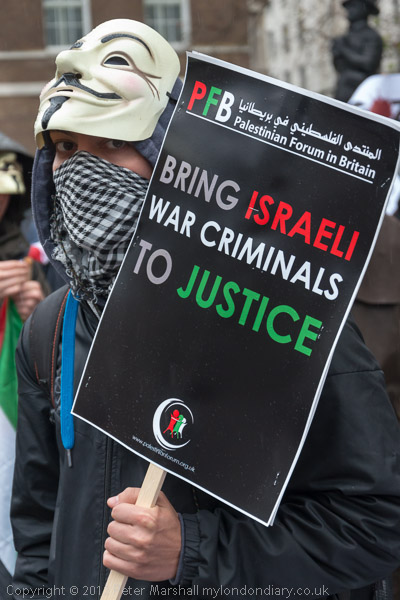
As in this year, “Canada, Germany, the United Kingdom, the United States, and other Western countries expressed support for what they considered Israel’s right to defend itself” , or condemned the Hamas attacks, while some other countries condemned the Israel attacks. Human Rights Watch said both sites committed war crimes.
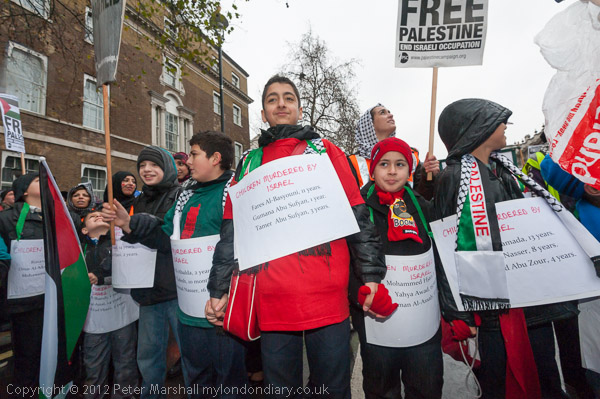
As in 2023, many of hose killed in Gaza in 2012 where children, and at the front of the march, ahead of the main banner were a group of children, each carrying a placard hanging around their neck with the names and ages of some of the dead children.
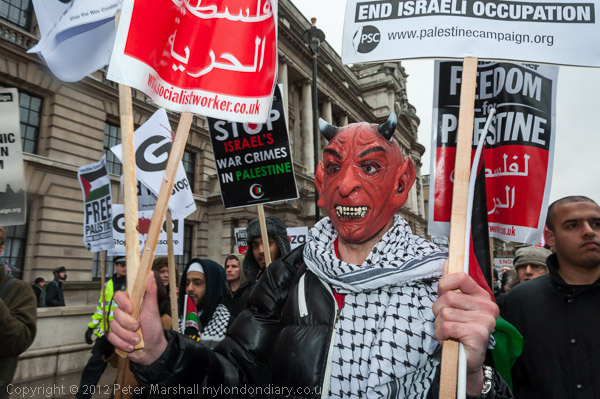
And as in the recent marches I’ve photographed, both the National Marches calling for a ceasefire in Gaza and those in Camden and Lewisham, among those taking part there were many individual Jews and Jewish groups including Jews Against the Siege of Gaza, Jews for Justice for Palestinians and a group of Jewish Socialists.
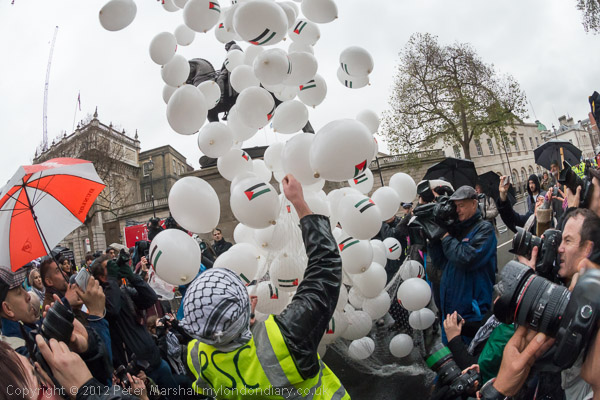
Before the march began 163 while balloons printed with the Palestinian flag – one for each of the Palestinians then known to have been killed – were released. The march then moved up Whitehall and I went with it as far as Trafalgar Square where I took pictures for the next 15 minutes or so as the crowd moved past before catching a train from Charing Cross to Lewisham.
More at Solidarity With Gaza, End the Seige Now
Save A&E at Lewisham Hospital – Lewisham
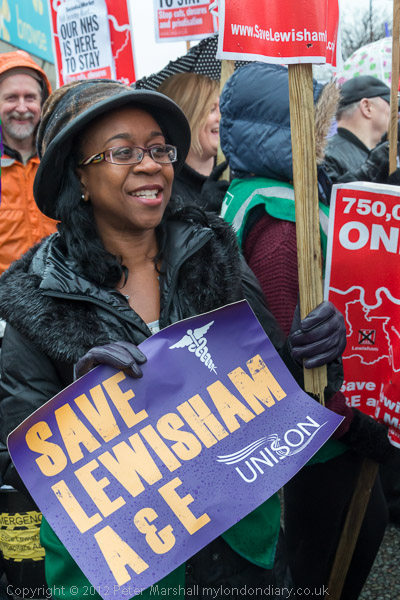
Thousands of protesters – perhaps as many as 15,000 – formed a human chain to hold hands around Lewisham hospital after a march from the centre of Lewisham to oppose plans to close its A&E department to pay debts from mismanagement at other hospitals in south London, which have huge PFI debts.
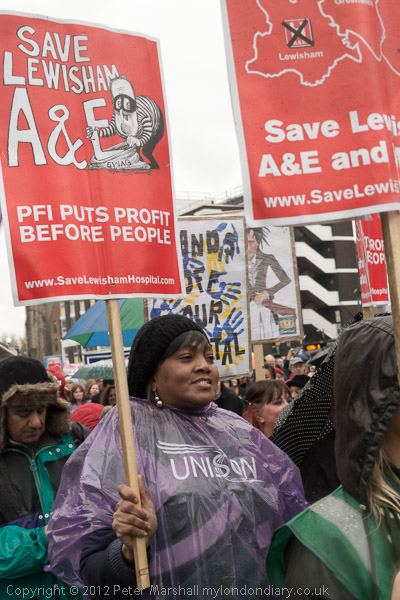
The march had seemed rather smaller than expected when I arrived at the start close to Lewisham station, but the numbers grew greatly as we got closer to the hospital and Ladywell Fields, with the road still packed with people coming to join this as the human chain began to form.
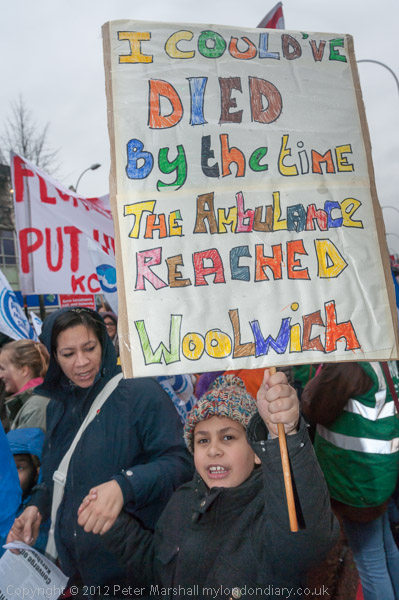
At Ladywell Fields the march divided into two, with hospital workers making their way to the front of the hospital in an anti-clockwise direction and the others going clockwise to meet them. Soon people were filling the whole thre-quarters of a mile ring around the hospital and holding hands in a human chain. The organisers had asked people to go in single file, but there were far too many in most places for this and in some areas the pavements were filled ten deep.
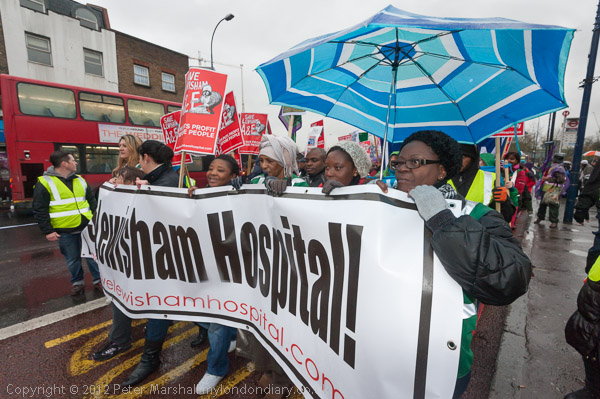
Traffic around the hospital was brought to a stop with people still flooding in on the High Street and Ladywell Road and nothing was moving on the roads by the time I left and caught a train home, except for ambulances which police and stewards were ensuring could still reach the hospital, clearing a route through the crowds.
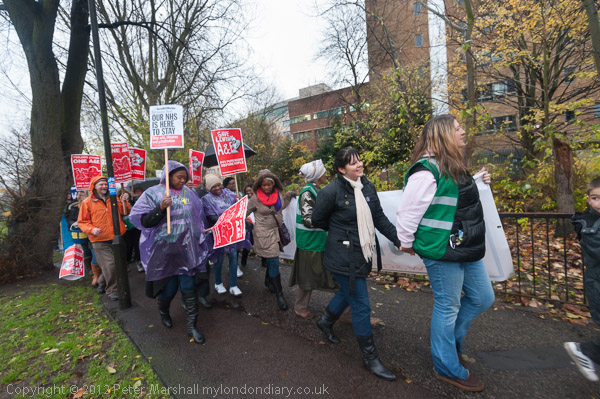
Lewisham Hospital is well run and well used by people in the area around, and has played no part in the financial problems faced by the South London Hospitals Trust, which were largely caused by disastrous private finance schemes entered into to build the trust’s hospitals in Orpington and Woolwich. The planned closures would drastically cut health services in the area and almost certainly lead to many deaths as well as huge inconvenience for millions and are driven entirely by the financial gain in selling off 60% of the site.
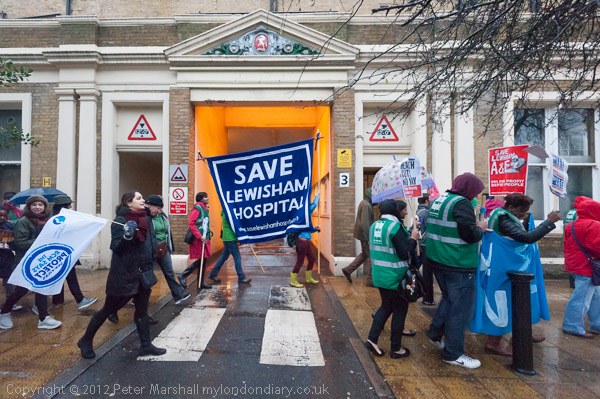
But even this makes little sense as the expected £17 million this would raise would be only a minor one-off contribution towards the over £60 million the Trust has to find each year for its PFI debts which were then expected to total around £1,200 million before they were paid off.
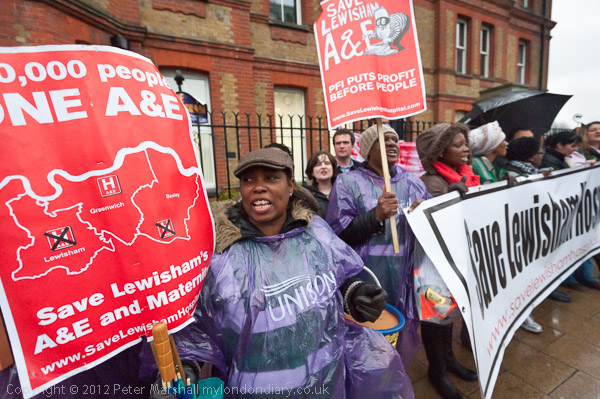
The problem of PFI debt is not of course limited to this trust. Government figures in 2018 were that the total value of PFI investments in the NHS was then £12.8 billion – and that by the time these were paid off the NHS will have paid over £80 billion for them – more than six times as much. The figures have worsened since then as many contracts include inflation-based cost increases – leading to an extra £264 million in payments in the past 2 years. Some trusts now have to spend 10-13% of their total income on their PFI debts, and these payments cannot be cut and are prioritised. over other expenditure such as than on staff costs and drugs.
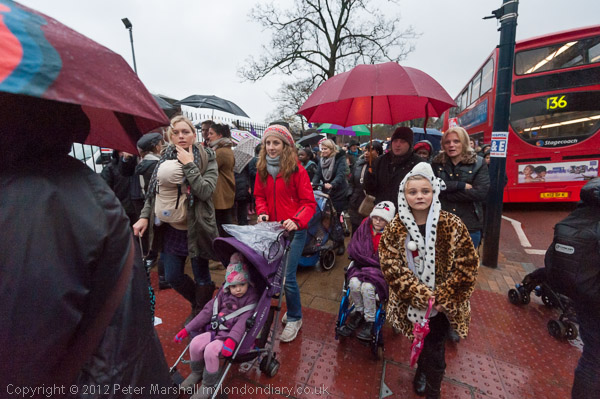
Lewisham Hospital’s campaign against the cuts was successful. They were ruled unlawful by the High Court and eventually dropped by Health Secretary Jeremy Hunt after he lost an appeal.
More at Save A&E at Lewisham Hospital.
